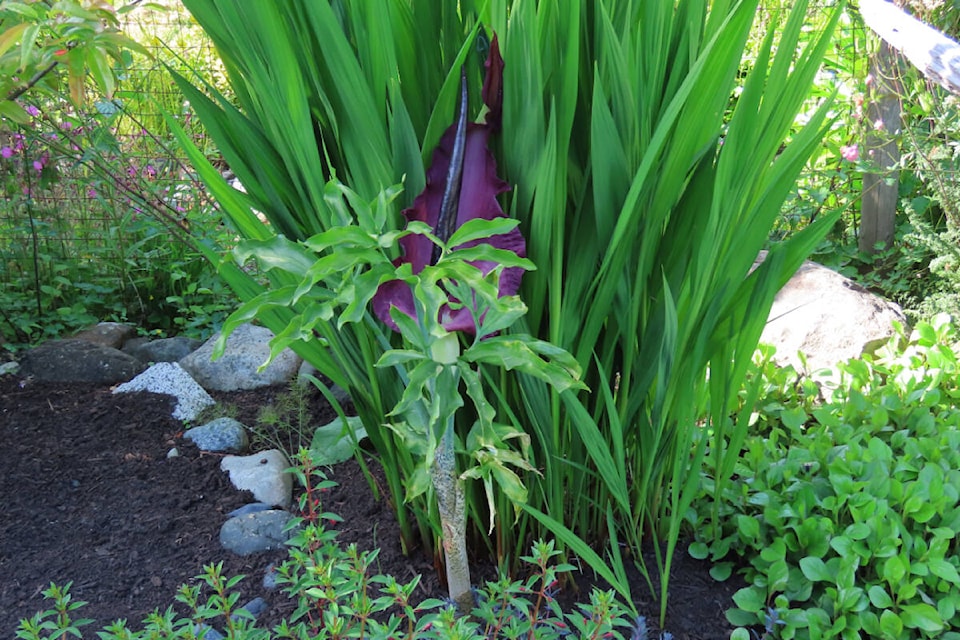Leslie Cox
Special to The Record
While I am a believer in the power of plants, I am suspicious of so-called “black magic.” That is, until a gift plant from my great-uncle makes its annual appearance in spring.
Let me introduce Dracunculus vulgaris, the voodoo lily – also called the dragon lily and dragonwort, but I think the former common name describes this plant best. (Not to be confused with another plant called voodoo lily in the Amorphophallus family.)
It is hard to miss in the garden even before it reaches full height although ours is a little obscured by the Crocosmia ‘Lucifer’ growing right behind it. (Hmm, there may be a darkly sinister connection here.)
Measuring 1.5-inch (3.8 cm) in diameter, the stalk stands stiffly erect. Its pale colour is liberally speckled with dark purple blotches along its entire 16-inch (40.6 cm) height. Add on another 18-inches (45.7 cm) for the large flower and you can get pretty up close and personal with this plant. Although you may not want to get too close.
I should note this plant can sometimes reach five feet (1.5 m) in height if given optimum growing conditions. So be warned you might not to plant this voodoo lily at the front of a garden bed or near any doorways or windows.
Why you may well ask? Because Dracunculus is in the Araceae family and like all aroids, the flower is made up of some pretty unique parts. A fleshy, deep-purple black spike called the spadix is the part of the voodoo lily containing the clusters of small, unisexual, apetalous (no petals) flowers. This spadix is surrounded by a single, bright purple bract which is called the spathe. When the inflorescence is ready to be pollinated, it emits a rotting flesh smell… another black magic phenomenon… to attract the necessary pollinating flies.
Truthfully, I have never caught a whiff of this obnoxious scent emanating from my great-uncle’s “gift” but perhaps the prevailing southeasterly breeze works in our favour. I also have never witnessed any flies hovering around our lily but this is likely because the flower cluster is hidden in the fold of the bract.
This revelation means we can enjoy the magical advantage our voodoo lily adds to this particular garden bed without any of the more sinister connotations its name implies. In fact, not everything to do with Dracunculus vulgaris is steeped in black magic.
In its native Turkey, the fruits, with seeds intact, have long been used as a treatment for hemorrhoids while the tubers were used to treat rheumatism. In the kitchen, the leaves were used to wrap cheese in order to preserve it. And for those of you who suffer from ophidiophobia – fear of anything that slithers – the leaves and tuber will offer you protection. At least according to folklore - and isn’t that what black magic is based on… folklore?
While this plant presents an exotic tropical look, it is very much a hardy plant in our Zone 7a garden. We did worry a bit through its first winter in our garden after being transplanted from Victoria. Unnecessarily, as it turned out. Give it a place in full or part sun with well-draining soil and you should have no problems either. Just sit back… at a distance… and let this black magic plant work its charm.
~ ~ ~ ~ ~
Our garden is open Thursdays to Sundays from 10 a.m. to 4 p.m. There is still much to see and enjoy. Contact me at duchessofdirt@telus.net if you need directions.
Leslie Cox co-owns Growing Concern Cottage Garden in Black Creek. Her website is at www.duchessofdirt.ca
